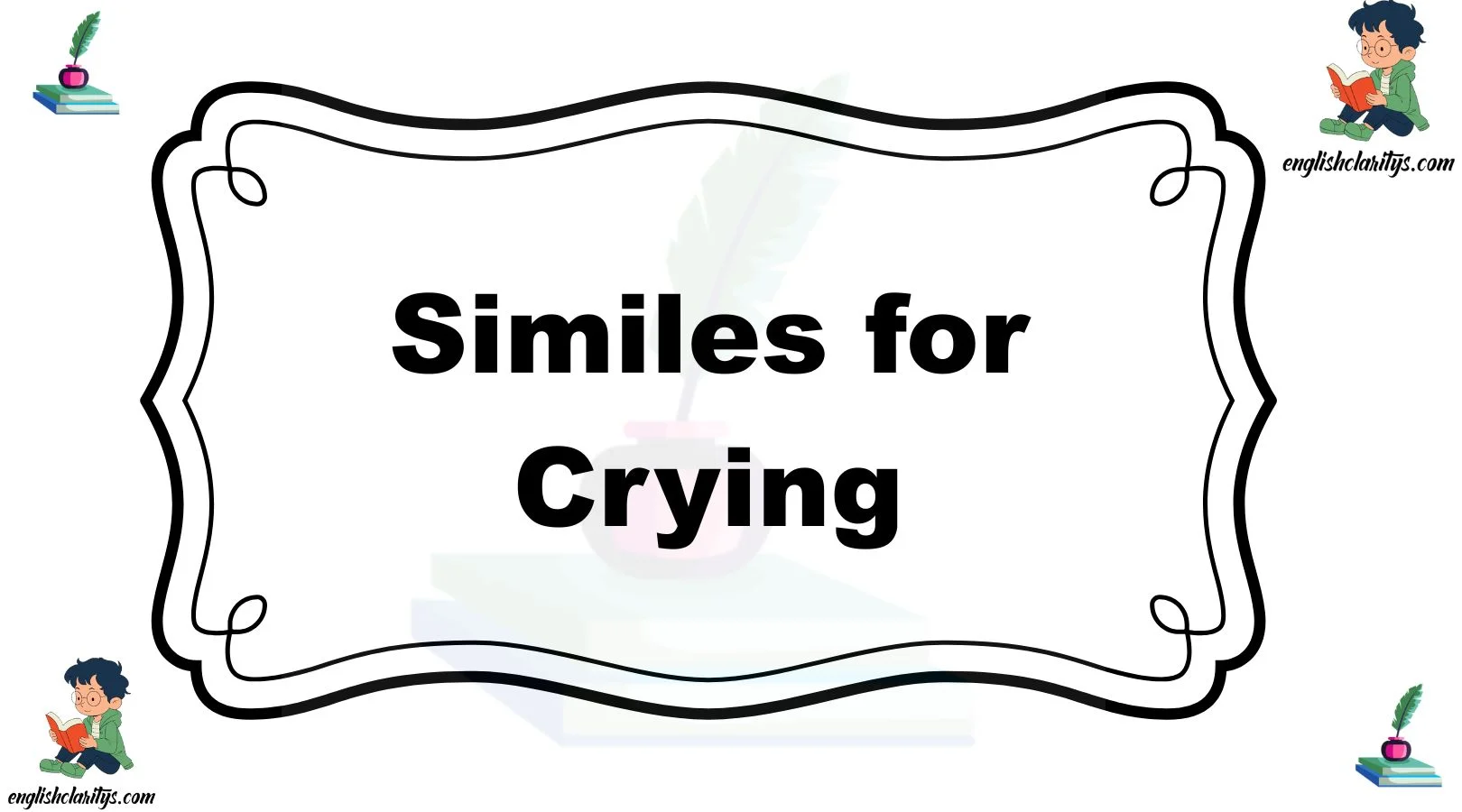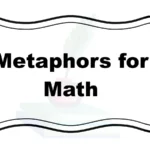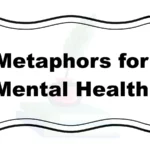Expressing emotions, especially something as vulnerable as crying, calls for words that feel genuine and heartfelt. Sometimes, saying “crying” simply doesn’t capture the depth of how someone feels. That’s why using similes—comparisons using “like” or “as”—can help you paint a richer picture of sorrow, relief, or overwhelming emotion.
Whether you’re writing a letter, comforting a friend, or describing a scene, these alternatives can make your message more personal, meaningful, and empathetic. Let’s explore 25 vivid similes for crying that bring warmth and clarity to emotional expression.
What Does “Similes for Crying” Mean?
Similes for crying are figures of speech that compare crying to something else to help vividly describe the intensity, sound, or appearance of tears. Instead of just saying “crying,” similes provide a more creative and emotional way to convey the act or feeling of shedding tears. They help readers or listeners connect better with the sentiment by using familiar images or ideas.
When to Use “Similes for Crying”
Similes for crying are great when you want to:
- Add emotional depth to your writing or speech.
- Describe a situation with more vividness and imagination.
- Show empathy or connection when talking about someone’s feelings.
- Paint a picture for an audience in stories, poetry, or personal letters.
- Express complex emotions where simple words feel too plain or blunt.
Pros and Cons of Using Similes for Crying
Pros:
- Create stronger emotional connections.
- Make descriptions more engaging and memorable.
- Help communicate nuances of crying (sadness, relief, joy).
- Provide creative freedom to express feelings.
Cons:
- May be misunderstood if the simile is too obscure.
- Overuse can make writing flowery or cliché.
- Some similes might not fit every context or culture.
1. Crying Like a River
Definition: Tears flow continuously and abundantly, similar to a river’s steady current.
Explanation: This simile shows crying that doesn’t stop, expressing deep sadness or overwhelming emotion.
Scenario Example: After hearing the heartbreaking news, she was crying like a river, her tears streaming down endlessly.
Best Use: When describing heavy, ongoing crying.
Tone: Empathetic, sorrowful
Other ways to say:
- Crying like a waterfall
- Crying like a torrent
- Crying like a rainstorm
2. Crying Like a Baby
Definition: Crying in a loud, uncontrollable, and innocent way, similar to an infant.
Explanation: Highlights vulnerability and raw emotion, often associated with helplessness.
Scenario Example: When he was scolded unfairly, he started crying like a baby, unable to hold back his feelings.
Best Use: To express childish or deeply emotional crying.
Tone: Sympathetic, tender
Other ways to say:
- Sobbing like a child
- Wailing like a toddler
- Crying in floods like a newborn
3. Crying Like a Fountain
Definition: Tears gush out rapidly and abundantly, like water flowing from a fountain.
Explanation: Emphasizes the volume and forcefulness of crying.
Scenario Example: She was crying like a fountain after the movie’s emotional ending.
Best Use: When tears come out in a strong, visible gush.
Tone: Intense, dramatic
Other ways to say:
- Crying like a geyser
- Crying like a waterfall
- Tears pouring like a spout
4. Crying Like the Sky is Falling
Definition: Crying as if the whole world is collapsing, showing extreme despair.
Explanation: A metaphorical way to indicate uncontrollable, intense crying.
Scenario Example: After losing her job, she was crying like the sky was falling.
Best Use: Expressing overwhelming grief or panic.
Tone: Dramatic, urgent
Other ways to say:
- Crying as if the world ends
- Crying like a storm is coming
- Crying like thunder crashes
5. Crying Like a Leaky Faucet
Definition: Tears come out slowly and repeatedly, like water dripping from a faulty faucet.
Explanation: Describes subtle, steady crying instead of bursts.
Scenario Example: He was crying like a leaky faucet, small tears falling one by one.
Best Use: When crying is quiet and restrained.
Tone: Subdued, melancholic
Other ways to say:
- Crying like rain drops
- Crying like a dripping tap
- Crying in quiet streams
6. Crying Like a Tornado
Definition: Crying violently and uncontrollably, like the chaos of a tornado.
Explanation: Shows emotional turbulence and intense distress.
Scenario Example: She was crying like a tornado after the argument.
Best Use: When crying is wild and overwhelming.
Tone: Chaotic, intense
Other ways to say:
- Crying like a hurricane
- Crying like a storm blast
- Crying like a cyclone
7. Crying Like Rain on a Window
Definition: Tears fall softly and steadily, resembling raindrops sliding down glass.
Explanation: Indicates quiet, reflective sadness.
Scenario Example: He was crying like rain on a window, quietly mourning the loss.
Best Use: To depict gentle, thoughtful crying.
Tone: Soft, contemplative
Other ways to say:
- Crying like soft drizzle
- Crying like gentle rain
- Crying like mist falling
8. Crying Like a Volcano Erupting
Definition: Sudden and explosive crying, like lava bursting out of a volcano.
Explanation: Tears come in powerful bursts after holding emotions in.
Scenario Example: After weeks of holding it in, she cried like a volcano erupting.
Best Use: When crying suddenly bursts out.
Tone: Dramatic, explosive
Other ways to say:
- Crying like an explosion
- Crying like an outburst
- Crying like a firestorm
9. Crying Like a Broken Dam
Definition: Tears flow uncontrollably, as if a dam has burst.
Explanation: Represents the release of pent-up emotions.
Scenario Example: Upon hearing the news, he cried like a broken dam.
Best Use: When emotions overwhelm and flood out.
Tone: Overwhelming, emotional
Other ways to say:
- Crying like a flood
- Crying like a bursting dam
- Crying like a tidal wave
10. Crying Like a Wet Dog
Definition: Tears or watery eyes appear, often with a sad or pitiful look.
Explanation: Implies sadness but sometimes with a hint of helplessness or cuteness.
Scenario Example: She looked at him crying like a wet dog after the argument.
Best Use: Describing sad, puppy-eyed crying.
Tone: Pitiful, tender
Other ways to say:
- Crying like a soaked puppy
- Crying with big eyes
- Crying in a pitiful way
11. Crying Like a Thunderstorm
Definition: Crying loudly and with force, similar to thunder roaring during a storm.
Explanation: Shows powerful, noisy crying.
Scenario Example: He was crying like a thunderstorm during the farewell speech.
Best Use: For loud, passionate crying.
Tone: Powerful, emotional
Other ways to say:
- Crying like crashing waves
- Crying like a storm blast
- Crying with roaring sobs
12. Crying Like an Autumn Leaf Falling
Definition: Tears fall gently and slowly, like leaves drifting down in autumn.
Explanation: Suggests quiet sadness and letting go.
Scenario Example: She was crying like an autumn leaf falling, calm and wistful.
Best Use: When crying is peaceful and reflective.
Tone: Calm, melancholic
Other ways to say:
- Crying like drifting leaves
- Crying like soft falling petals
- Crying like a slow breeze
13. Crying Like a Candle Flickering Out
Definition: Tears come in small, fading bursts, like a candle’s flame flickering before going out.
Explanation: Suggests fragile, fading emotions.
Scenario Example: His tears were like a candle flickering out after hearing the sad news.
Best Use: To describe subtle, weakening crying.
Tone: Fragile, delicate
Other ways to say:
- Crying like a fading light
- Crying like soft whispers
- Crying like gentle sighs
14. Crying Like a Broken Heart
Definition: Intense and deep crying caused by emotional pain.
Explanation: Symbolizes heartbreak and profound sadness.
Scenario Example: After the breakup, she cried like a broken heart.
Best Use: Expressing deep emotional pain.
Tone: Sorrowful, heartfelt
Other ways to say:
- Crying in anguish
- Crying in despair
- Crying in sorrow
15. Crying Like a Winter Wind
Definition: Tears that sting or feel cold, like harsh winter wind blowing.
Explanation: Suggests painful, uncomfortable crying.
Scenario Example: He was crying like a winter wind after losing his friend.
Best Use: When crying feels physically or emotionally harsh.
Tone: Harsh, painful
Other ways to say:
- Crying with a chill
- Crying with sting
- Crying like cold air
16. Crying Like a Drenched Flower
Definition: Tears falling like drops soaking a flower after rain.
Explanation: Delicate crying, mixed with beauty and vulnerability.
Scenario Example: She was crying like a drenched flower in the morning sun.
Best Use: For gentle, heartfelt crying.
Tone: Tender, poetic
Other ways to say:
- Crying like dew drops
- Crying like morning mist
- Crying softly
17. Crying Like a Sobbing Willow
Definition: Crying quietly and steadily, like willow branches swaying in the wind.
Explanation: Represents graceful, continuous sorrow.
Scenario Example: His tears fell like a sobbing willow during the memorial.
Best Use: When crying is calm but persistent.
Tone: Peaceful, mournful
Other ways to say:
- Crying like gentle swaying
- Crying in soft waves
- Crying like whispering leaves
18. Crying Like a Flooded Basement
Definition: Tears pour out uncontrollably, flooding like water in a basement.
Explanation: Depicts overwhelming crying.
Scenario Example: After hearing the verdict, she was crying like a flooded basement.
Best Use: To express unstoppable crying.
Tone: Overpowering, emotional
Other ways to say:
- Crying like a waterfall
- Crying in torrents
- Crying like a broken dam
19. Crying Like a Desert Bloom
Definition: Tears that come unexpectedly, like rare flowers blooming in a desert.
Explanation: Suggests surprising or rare moments of crying.
Scenario Example: He cried like a desert bloom after years of silence.
Best Use: When crying is rare but meaningful.
Tone: Gentle, hopeful
Other ways to say:
- Crying like a sudden rain
- Crying like a rare flower
- Crying like a gentle surprise
20. Crying Like a Melting Ice Sculpture
Definition: Tears flow like ice melting slowly, losing shape.
Explanation: Shows slow, continuous crying, symbolizing fading strength.
Scenario Example: She was crying like a melting ice sculpture during the farewell.
Best Use: To show gradual emotional collapse.
Tone: Sad, poetic
Other ways to say:
- Crying like dripping ice
- Crying like fading snow
- Crying like soft melting
21. Crying Like a Twilight Sky
Definition: Tears fall quietly and beautifully, like colors fading at dusk.
Explanation: Evokes a calm, reflective sadness.
Scenario Example: He cried like a twilight sky, peaceful and soft.
Best Use: To describe gentle, serene crying.
Tone: Calm, reflective
Other ways to say:
- Crying like a sunset
- Crying like fading light
- Crying like evening calm
22. Crying Like a Chipped Porcelain Doll
Definition: Tears that symbolize fragility and brokenness.
Explanation: Suggests delicate, heart-wrenching crying.
Scenario Example: She cried like a chipped porcelain doll after the loss.
Best Use: To express vulnerability and heartbreak.
Tone: Fragile, emotional
Other ways to say:
- Crying like shattered glass
- Crying like broken dreams
- Crying like fragile porcelain
23. Crying Like a Lonely Lighthouse
Definition: Tears that stand out in solitude, like a beacon in the dark.
Explanation: Indicates isolated or solitary crying.
Scenario Example: He cried like a lonely lighthouse on a stormy night.
Best Use: To express loneliness in crying.
Tone: Isolated, somber
Other ways to say:
- Crying in solitude
- Crying alone
- Crying like a silent watcher
24. Crying Like a Spark in the Dark
Definition: Tears that shine briefly but powerfully, like a spark in darkness.
Explanation: Suggests brief but intense moments of emotion.
Scenario Example: Her tears were like sparks in the dark during the goodbye.
Best Use: For fleeting, powerful crying moments.
Tone: Intense, hopeful
Other ways to say:
- Crying like a flash
- Crying like a firefly
- Crying with bright emotion
25. Crying Like a Soft Whisper
Definition: Tears that come quietly, barely audible, like a whisper.
Explanation: Describes gentle, restrained crying.
Scenario Example: He was crying like a soft whisper, barely making a sound.
Best Use: When crying is quiet and intimate.
Tone: Gentle, intimate
Other ways to say:
- Crying in silence
- Crying like a hush
- Crying softly
Conclusion:
Crying is a deeply human expression of emotion, and finding the right words to describe it can help us communicate with empathy and warmth. Using similes for crying enriches our language, allowing us to share vulnerability in ways that feel authentic and heartfelt. Whether tears fall like a river or a gentle whisper, these vivid comparisons offer meaningful ways to connect, comfort, and understand each other’s feelings.
MCQs:
1. Which simile best describes heavy, ongoing crying?
A) Crying like a leaky faucet
B) Crying like a river
C) Crying like a soft whisper
D) Crying like a spark in the dark
2. “Crying like a baby” emphasizes what kind of emotion?
A) Joyful laughter
B) Vulnerability and innocence
C) Anger
D) Surprise
3. What tone does “crying like a fountain” usually convey?
A) Quiet and reserved
B) Intense and dramatic
C) Casual and indifferent
D) Playful and lighthearted
4. Which simile describes crying in sudden bursts after holding emotions in?
A) Crying like a waterfall
B) Crying like a volcano erupting
C) Crying like a river
D) Crying like a whisper
5. “Crying like a leaky faucet” suggests crying that is:
A) Loud and uncontrollable
B) Slow and steady
C) Joyful
D) Quick and intense
6. Which simile would be best to describe crying quietly and thoughtfully?
A) Crying like a thunderstorm
B) Crying like rain on a window
C) Crying like a tornado
D) Crying like a flood
7. What is the con of using similes for crying?
A) They can make writing more vivid
B) They might be misunderstood if obscure
C) They connect emotionally with readers
D) They help express nuanced feelings
8. “Crying like a broken dam” suggests:
A) Controlled crying
B) Uncontrollable flood of tears
C) No crying at all
D) Laughing instead of crying
9. Which simile compares crying to the slow fading of light?
A) Crying like a melting ice sculpture
B) Crying like a thunderstorm
C) Crying like a waterfall
D) Crying like a baby
10. Which simile suggests crying out of loneliness?
A) Crying like a lonely lighthouse
B) Crying like a spark in the dark
C) Crying like a fountain
D) Crying like a broken heart
11. “Crying like a soft whisper” implies crying that is:
A) Loud and uncontrollable
B) Quiet and gentle
C) Intense and explosive
D) Rapid and continuous
12. When is it best to use “crying like a river”?
A) For restrained crying
B) For intense, heavy crying
C) For rare moments of tears
D) For joyful tears
13. “Crying like a desert bloom” suggests tears that are:
A) Continuous and heavy
B) Unexpected and rare
C) Loud and explosive
D) Harsh and painful
14. Which simile conveys fragile and delicate crying?
A) Crying like a candle flickering out
B) Crying like a thunderstorm
C) Crying like a flood
D) Crying like a leaky faucet
15. What tone does “crying like a winter wind” suggest?
A) Warm and comforting
B) Harsh and painful
C) Playful and joyful
D) Calm and peaceful
Answers:
- B) Crying like a river
- B) Vulnerability and innocence
- B) Intense and dramatic
- B) Crying like a volcano erupting
- B) Slow and steady
- B) Crying like rain on a window
- B) They might be misunderstood if obscure
- B) Uncontrollable flood of tears
- A) Crying like a melting ice sculpture
- A) Crying like a lonely lighthouse
- B) Quiet and gentle
- B) For intense, heavy crying
- B) Unexpected and rare
- A) Crying like a candle flickering out
- B) Harsh and painful
FAQs:
1. Why use similes instead of just saying “crying”?
Using similes adds emotional depth and creativity to your expression. Instead of plainly stating someone is crying, a simile helps convey how they’re crying—gently, intensely, suddenly, or sorrowfully—making your message more vivid, relatable, and heartfelt.
2. Are similes for crying suitable for professional writing?
In most creative, literary, or emotional pieces, yes. However, in formal professional settings, it’s best to use similes sparingly and only when appropriate. They are ideal for poetry, storytelling, personal writing, or speeches, but not usually for reports or business communication.
3. How do I know which simile fits best?
Consider the tone and emotion you’re trying to convey. For example:
- If it’s quiet sorrow, use something like “crying like rain on a window.”
- If it’s overwhelming grief, try “crying like a broken dam.”
- If the crying is rare or surprising, use “crying like a desert bloom.”
Match the simile to the emotion’s intensity and situation.
4. Can I make up my own similes for crying?
Absolutely! In fact, some of the most powerful expressions come from personal creativity. Just make sure your comparison is relatable and emotionally clear. For instance, if crying reminds you of a wilted flower or a foggy morning, use that image. Originality can make your writing feel more authentic and unique.
5. Are these similes appropriate for children’s stories or emotional letters?
Yes, many of them can be adjusted to suit younger audiences or heartfelt letters. Use softer, more familiar imagery (like “crying like a baby” or “crying like raindrops”) for younger readers, and choose similes that match the tone of care and empathy in personal messages.




